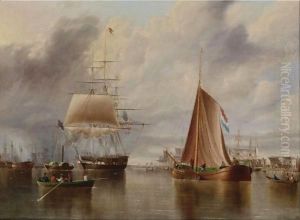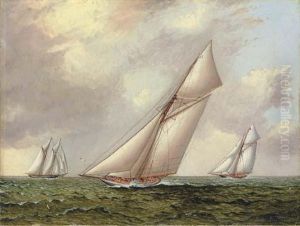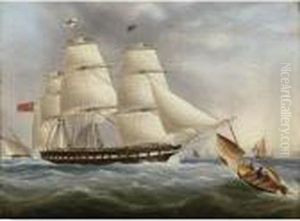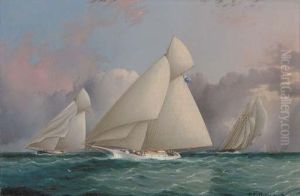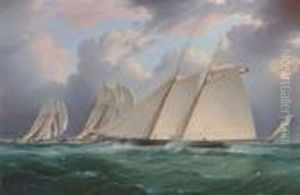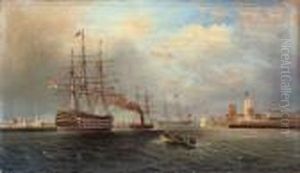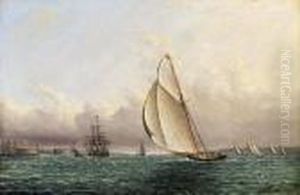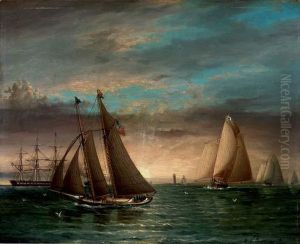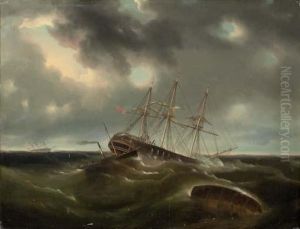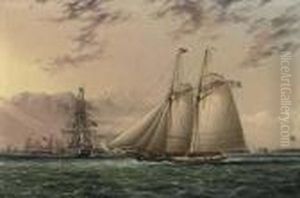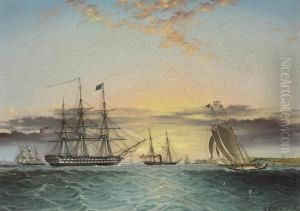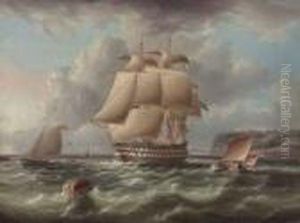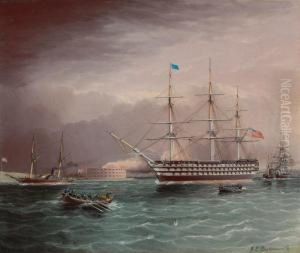James E. Buttersworth Paintings
James Edward Buttersworth was a preeminent 19th-century maritime artist known for his detailed and dramatic paintings of ships and seascapes. Born in 1817 in London, England, he hailed from a family of marine artists, which influenced his career choice. His father, Thomas Buttersworth, was also a notable marine painter. James began his artistic career in England but moved to the United States in the mid-19th century, where he found a market for his work among wealthy ship owners and maritime enthusiasts.
Buttersworth's work is characterized by its meticulous attention to detail, accuracy in the portrayal of different types of vessels, and his ability to capture the dynamic movement of the sea. He was particularly skilled in depicting the grandeur of the clipper ships and the excitement of yacht races, which were popular during his time. His paintings often featured historical events, such as famous sea battles or record-setting voyages.
Throughout his career, James E. Buttersworth exhibited at various institutions, including the American Art-Union and the National Academy of Design. His works were highly sought after during his lifetime and continue to be celebrated for their historical significance and artistic merit. Today, his paintings are part of many prestigious collections and museums, including the Peabody Essex Museum, the Smithsonian American Art Museum, and the Mariner’s Museum.
He lived and worked primarily in the New York City area and New Jersey, and his legacy as one of the leading maritime artists of the American 19th century remains strong. Buttersworth's keen ability to capture the elegance and adventure of maritime life has left an indelible mark on the genre of marine painting. He passed away in 1894, leaving behind a vast body of work that continues to captivate audiences with its beauty and historical value.



